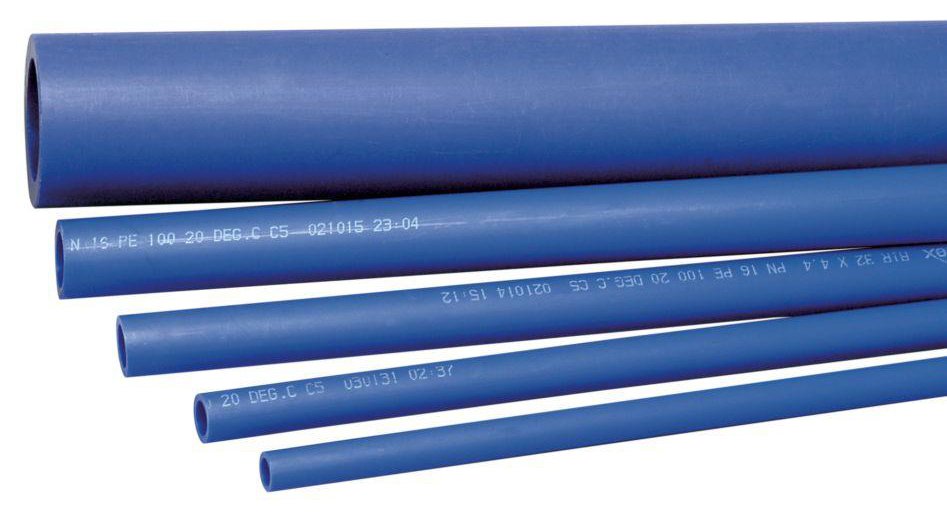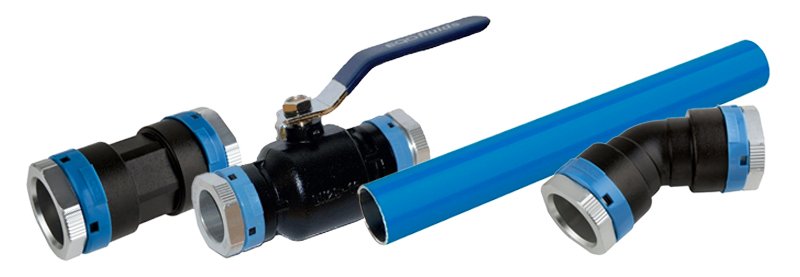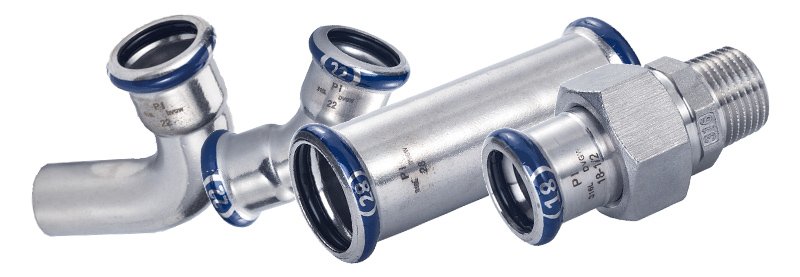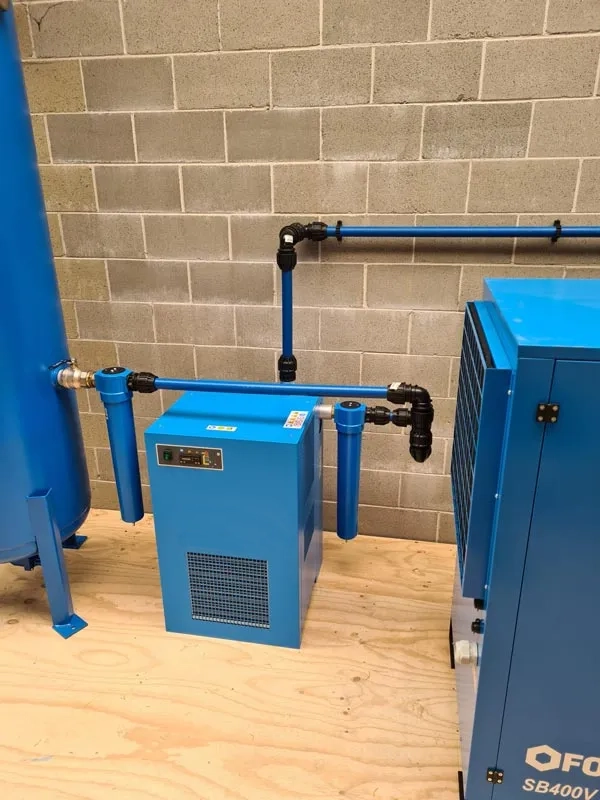Here at focus industrial, we offer 3 different piping system materials, polyethylene, aluminum and stainless steel. There are many different variants to consider before making a final decision.
Poly Piping

Whilst poly piping is the cheapest, it is also the most flexible which means it requires up to 4x the amount of brackets to maintain a straight piping system. This is important so that if any moisture happens to make its way into your compressed air system line, it wont sit in the dips in the pipe. Also, an aesthetic point of view, dips in the pipe doesn’t look neat or professional. The brackets used to install poly are a clip lock system where the piping is simply pushed into the bracket which automatically locks..
Poly also has the thickest sidewall of the 3 variants. This means that if you run an aluminium or stainless-steel variant, you can run the size below and still have the same inside diameter as the bigger poly variant. This is important to remember as all piping systems are all measured using the outside diameter.
Poly is a very soft compound which makes for ease of cutting and allows you to bend around small obstacles on your path (depending on the diameter pipe). But the soft compound is something to be wary of when installing as it will expand and contract with the heat and cold in ambient temperature, which requires expansion joints. The rule of thumb is an expansion joint every 25m which is 4 elbows added to your cost per every expansion joint.
Aluminium Piping

The next to consider is aluminium piping system, the system we use is called unipipe which is a very smart system allowing fittings to interlock with different piping diameters which maintains a clean looking piping system.
Aluminium is a lightweight yet ridged piping system which makes it great to install as minimal bracketry is needed compared to the poly system, in applications where the piping needs to be suspended from the roof using threaded rod, the aluminium system has been cheaper in many cases over poly due to the sheer savings of bracketry. Stainless steel requires roughly the same amount of bracketry. Aluminium piping is metric which is the same as poly piping meaning the same clip lock brackets used on the poly can be used on the aluminium.
Aluminium is softer than stainless steel meaning that cutting it is about 50% quicker. On a job that is scheduled to take 2-3 weeks, that time saving could equate to a day’s work.
Stainless Steel Piping

Stainless steel is usually installed into the medical or food/beverage industry but not limited to that. It is probably the most aesthetically pleasing of the 3 variants, with fittings being sealed to the pipe with a crimp system, this piping system has a 30-year leak free guarantee. We find people that get traffic through their workspace opt for this system. Usual bracketry for fixing to a surface is a T-clip and saddle, the pipe sits roughly 30mm off the fixed surface to enable the crimping jaw to get the whole way around the pipe to get an even crimp.
In conclusion, each type of piping material has its own unique characteristics and benefits. Poly is the most flexible and cheapest, but requires more bracketry to maintain a straight piping system. Aluminium is lightweight and easy to install, and stainless steel is aesthetically pleasing and has a long-term leak-free guarantee. It’s important to consider the specific needs of your factory when deciding on the right piping system for your compressed air setup. Additionally, working with a reputable company like focus industrial can help ensure that you make the best decision for your factory.

